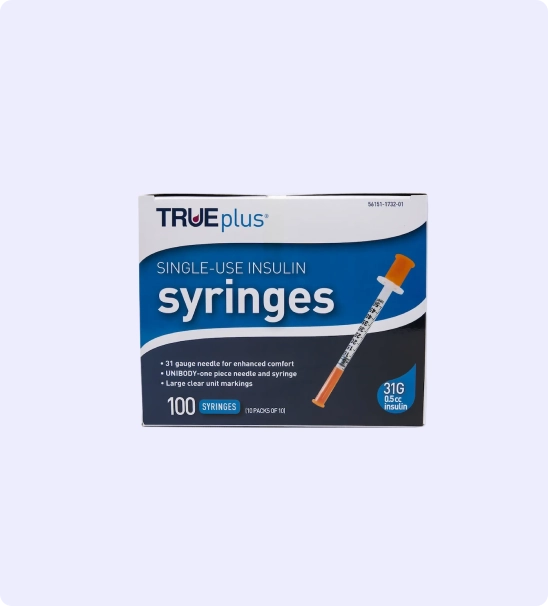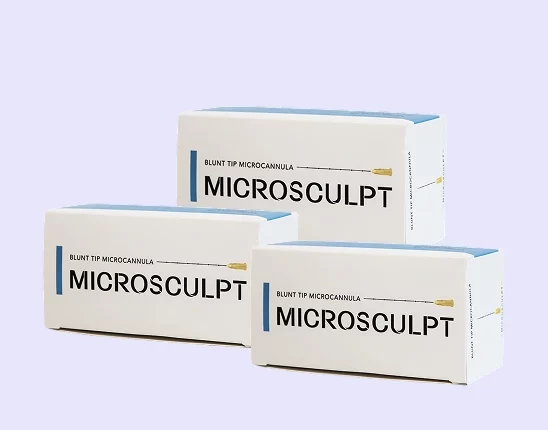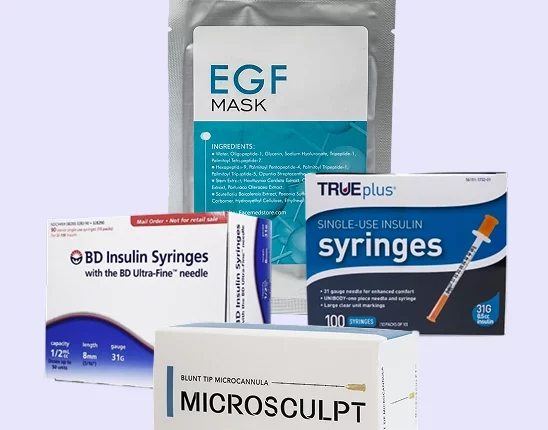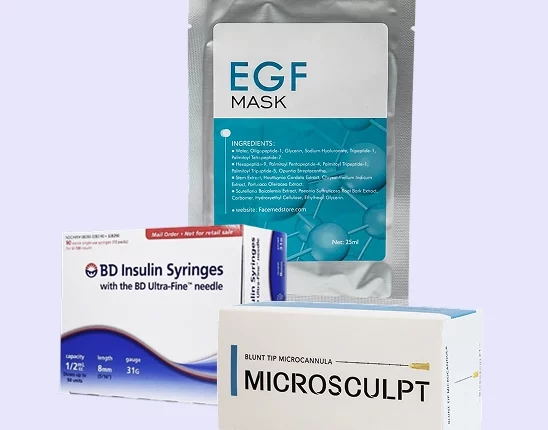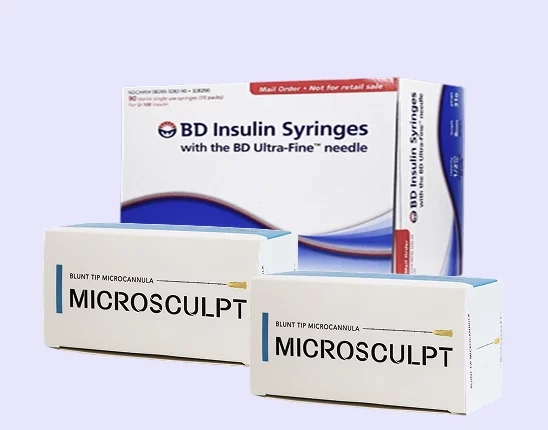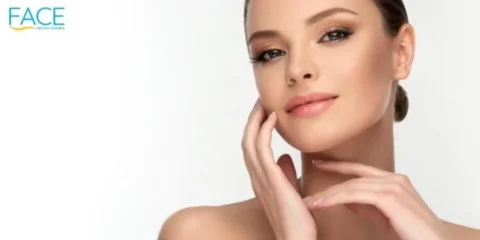According to research by the American Society of Plastic Surgeons, around 2.6 million dermal filler injections were performed in the United States in 2018 alone. Their popularity is only set to rise as an alternative to surgery, with more brands entering the market by the year. This surge of injectable use also means that dermatologists have an increased obligation to study the rheology of the dermal fillers that they use.
But why is the rheology of dermal fillers so important? Because of the unique demands required with dermal filler injections, dermatologists must always be sure of the filler’s rheology when considering which brand to use. The selection of the best dermal filler will rely heavily on this understanding, and will be a key factor in producing the desired outcome from the procedure.
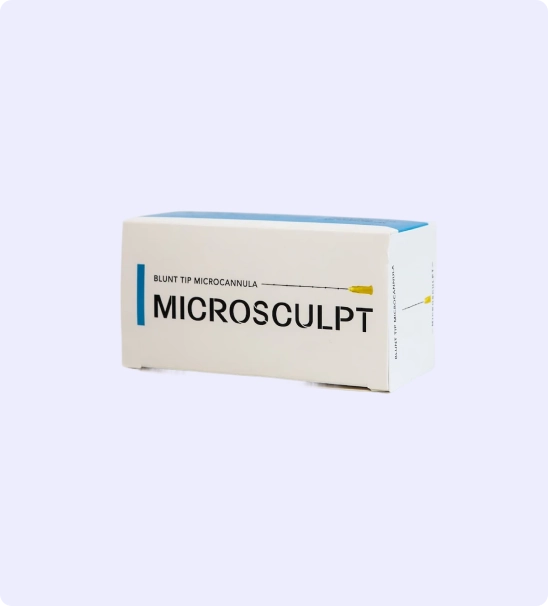
Injections Your Patients Will Love! Code “20OFF” Takes 20% off Your First Order!
Microcannulas are a tool that every great injector must master. Patients want quick results with no downtime. Our microcannulas are high quality and a fraction of the price of our competitors!
You can create an account here.
Why Study And Research Dermal Filler Rheology
The science of rheology (or the study of how an object flows) has received particular interest with dermal fillers since their soft solid states react much like any other material that deforms with the flow, not an external force. The rheology of dermal fillers matter since they can affect the treatment options used by dermatologists and the results experienced by the patient.
It’s also crucial to understand rheology because of the different selection of fillers available. For example, Allergan’s Juvederm methods for tissue integration and replicating skin texture are very different from Suneva’s Bellafill.
Three of the primary reasons dermal filler rheology matters are:
1. The capacity of the filler to replicate existing tissue
Dermal fillers are not designed to freeze skin and muscles in place like Botox. Rather, they are materials that fill in any gaps underneath the skin. Because they are considered as a foreign substance (even biocompatible ones), it’s crucial to understand how these soft solids will behave under the stresses that the patient experiences with their day-to-day activities.
Patients can have different lifestyles and habits, all of which potentially affect the appearance and longevity of dermal fillers. If the dermatologist cannot account for this factor while determining the rheology of the filler they will use, the patient will probably have to come back earlier and more often for re-application.
Not only is this a significant investment of time and money on the patient’s part, but this also unnecessarily drains the dermatologist/cosmetic practice’s supply of filler. Other complications can also arise from the filler not being able to withstand the daily activities of the person, which can further strain their body and render the effects of the filler moot.
2. Better accuracy with the selection of multiple filler areas
Some dermal fillers can be used in multiple tissue locations, there are different ways that a dermatologist can leverage the rheology of the filler to achieve the best result. However, this also means accounting for the different stresses that the area is exposed to. This can help the dermatologist determine which kind of dermal filler works best for which tissue area.
This is universal for all types of dermal fillers, but especially the ones that use hyaluronic acid. Dermal fillers like Restylane have different formulas that are designed for specific areas of the face, and other dermal fillers behave differently depending on how much material is injected into the skin. These provide plenty of options for the dermatologist to come closer to improving their patient’s desired results.
3. Improving the results of the aesthetic treatment
Finally, determining the rheological properties of the dermal filler can give the dermatologist a better idea of how it reacts with the process of injection. Since dermal fillers aren’t pure liquids, the mechanism of injecting them from a syringe, through a needle, and into a patient can be surprisingly complex. Given that a lot of this will rely on the dermatologist’s understanding of the procedure, a thorough understanding of the rheology of the dermal filler will make the application much easier and closer to the desired results.
This is also crucial when giving advice to patients about the aftercare required after dermal filler injections. Since dermal fillers vary in showing their results, dermatologists need to explain its rheology in a way where the patient understands exactly how their filler works with their lifestyle. It also makes it easier to make adjustments when necessary depending on the tissue layer injected.
Methods To Determine Key Rheological Properties
When evaluating a potential dermal filler to use, there are four major rheological properties that dermatologists should check before applying them to their patients.
1. Viscoelasticity
Viscoelasticity refers to the two characteristics that semi-solid fluids like dermal filler exhibit against the flow and their resistance to pressure. Most human tissue actually exhibits viscoelastic properties, so dermal fillers must display the same amount to be fully compatible with the skin. According to this article published in Dermatologic Surgery, even fillers that use liquid matter like hyaluronic acid need to keep this consideration in mind.
Because most dermal filler materials have elasticity – because of the gel or similar polymer like formations – determining the viscoelasticity is crucial to how well a dermal filler can hold up to the different facial motions that a person displays. For tissue areas that need plenty of fillers like the cheeks or deep lines around the eyes, dermal fillers need the precise amount of viscoelasticity to hold up to being pushed and pulled.
2. Yield stress
Yield stress refers to how much force needs to be applied to the material before it flows. For dermal fillers, this behavior will determine how much force the injector needs to apply to the syringe so the filler will flow through the needle. Typically, low yield stress makes for more ideal fillers, since it makes the pushing action from the syringe go smoothly.
This isn’t just to make handling easier: dermal fillers that are too difficult to push away from the syringe will also affect the outcome of the treatment. Filler areas must be injected with accuracy to ensure a more cohesive look after the procedure. The filler material needs to have an even flow while coming out of the syringe, since that gives the dermatologist better control with how much and where it flows.
3. Compression forces
Compressive forces are the movements that affect the vertical motion of dermal fillers. Because most of them are injected deep within the subdermal layers of tissue, fillers need to resist these compression forces and keep their shape. Actions like involuntary muscle contractions, muscle movement caused by talking or laughing, or even by laying down their head.
Because these compression forces are near-constant, a dermal filler needs to have adequate resistance to keep its shape and last longer inside the tissue. With a weak resistance to compression forces, a patient may find that the fill will not last as long as they expect it, increasing the need for both filler materials and follow-up sessions for reapplication.
4. Shear deformation
Shear deformation causes a change in shape, which can show how well a material will hold up under significant outside forces. For dermal fillers, this usually applies to its shear thinning behavior, or how it flows through the needle during injection. Ideally, dermal fillers should have high shear-thinning so the filler can keep its shape even after being injected through the small diameter of the needle.
However, if the dermal filler shears too much, it can spread more than intended after being deposited. This means that the filler material is more likely to expand to tissue areas that the injector was not meant to fill, or will deform and spread easily with the day-to-day activities of the patient.
Making sure that the dermal filler meets these four properties is key to having a better injection procedure, but also to ensure that the filler has better tissue integration once inside the patient. A dermatologist must do their due diligence in research about a dermal filler’s rheology for the patient’s desired outcome.
Browse Our Selection Of High-Quality Medical Devices And Tools At FACE Medical Supply
-
 Microcannula Multi-Gauge Precision Set
Microcannula Multi-Gauge Precision Set -
 Microcannula Complete Injection System
Microcannula Complete Injection System -
 Microcannula Size Progression Training Kit
Microcannula Size Progression Training Kit -
 Microcannula Professional Starter Kit
Microcannula Professional Starter Kit -
 Microcannula Volume Practice Pack
Microcannula Volume Practice Pack -
 23 gauge 50 mm (2 inch) Microcannulas
23 gauge 50 mm (2 inch) Microcannulas -
 22 Gauge 100 mm (4 inch) Microcannulas.
22 Gauge 100 mm (4 inch) Microcannulas. -
 27 Gauge 38 mm (1.5 inch) Microcannulas
27 Gauge 38 mm (1.5 inch) Microcannulas -
 25 Gauge 38 mm (1.5 inch) Microcannulas
25 Gauge 38 mm (1.5 inch) Microcannulas
Dermatologists will need to scrutinize the rheological properties of dermal fillers to use them accurately on their patients for the best results. Selection of the best dermal filler to use will rely on their understanding of their rheology, allowing for better recommendations on the exact brands to use and dealing with any complications that may arise. In addition, this also helps any aesthetic practice to cut costs by knowing exactly how much filler is needed.
FACE Medical Supply has years of experience in providing high-quality and affordable medical devices and tools to cosmetic practices in New York. We have extensive knowledge about the latest innovations in the beauty industry and help give our clients access to groundbreaking products like PEP Factor. Combined with a commitment to excellent customer service, we strive to become a partner in bringing our selection of products to cosmetic practices everywhere.
For more information on our services and our stocks, contact us today.
Read more: HA vs. Non-HA Fillers: Which Should You Use?
